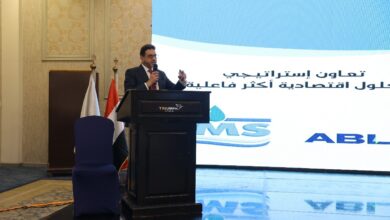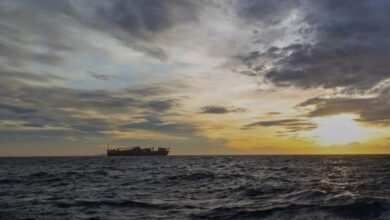Lifting Safety: Inexperienced employees, deepwater/subsea projects push lifting challenges to new
“The challenges have shifted,” said Mike Brasic, who retired from BP in May 2008 as lifting adviser and as HSE manager for BP Sakhalin. First, there’s the people problem. “The level of experience among employees has gone down as the level of activity has gone up. That’s presenting challenges with competency that the industry must address.”
Second, the move into deepwater and subsea operations has brought its own set of technological and safety challenges – including lifting challenges. “It’s a new phase to the lifting game,” he said.
Lifting performance
Mr Brasic believes the industry has seen a decrease in lifting fatalities and serious incidents in recent years, and several factors have contributed to that.
“There’s more focus on near-miss incidents. Rather than going back to work as if nothing had happened, today the company will stop the operation and investigate the cause, then make recommendations to prevent it from happening again.”
Increasing attention paid to procedure compliance, safety observational programs and crane training also have all helped, he said, as well as increasing automation on the rig floor. “The man-machine interface has presented its own set of challenges, but I think the industry is coming to grips with them. New technologies almost always come with teething problems, but if they’re managed properly, safety will improve.”
Another helpful tool for the industry has been the International Association of Oil & Gas Producers’ Lifting & Hoisting Safety Recommended Practice. Impact of the OGP guidelines has been especially evident in three areas in the Gulf of Mexico, Mr Brasic said. First is the designation of a person in charge. Second is in offshore personnel transfers, both in equipment and process. Finally, there is the lift plan, which is required for every lift under OGP.
“We’ve made a lot of progress with lift planning,” he said, but goes on to note one challenge that may require a break with tradition – the overuse of tag lines. With the current capabilities of modern vessels, cranes and other lifting equipment, when are tag lines necessary and when might they actually have more risk than benefit?
OGP has recommended the evaluation of tag line use, and Mr Brasic suggested that evaluation might be incorporated as part of the lift plan process.
Deepwater, subsea
Offshore drilling, as it pushes into deeper waters and moves completion and production tasks subsea, is also bringing new challenges to lifting, Mr Brasic said.
The sheer size of these large deepwater facilities and their lifting needs have created a need for not only higher-capability cranes but also more of them. Personnel transfers also take on extra risks. “Bottom-supported platforms were simpler facilities that didn’t move and were 60-70 ft off the water. Now we’re moving to dynamic deepwater facilities that are 200 ft off the water. That’s a huge change in risk,” he said.
Subsea is a new arena as well, and the challenge is to achieve a similar level of knowledge and experience in subsea lifting – setting wellheads, hardware and associated subsea equipment down into 5,000-6,000 ft of water – comparable to the experience level industry has with more traditional lifting tasks.
So far, industry appears to be managing the risks well, though he cautioned, “Lifting is always a risk, and it won’t go away. I think there’s room for improvement.”
Mr Brasic, along with BP Gulf of Mexico SPU dropped objects coordinator Jake Reidenbach, will speak at the IADC Lifting & Mechanical Handling Conference & Exhibition, 15-16 July, in Houston. They will discuss BP’s approach to the lift planning process as developed from the OGP recommended practice. The program is being implemented across BP’s GOM operations.
Chevron program
At Chevron, the company recognizes that no set of rules, however extensive, can fully define the responsibility of ensuring safe lifting operations. Rather, it will depend on the commitment, integrity and good sense of the personnel who oversee and actually do the lifting.
Still, that doesn’t stop Chevron from working to create a responsible crane program to guide its employees on lifting safety. Robert Guidry, GOM OSI crane coordinator for Chevron’s Gulf of Mexico business unit, said that the GOM crane program documents everything from safe work practices to training to pre-lift planning to the maintenance program to inspections. It provides definitions on terms such as heavy lifts. It details weather conditions that limit crane operations, such as wind or lightening.
The program also clearly outlines pre-lift planning, a critical process to ensure safety. At Chevron, this planning involves communication among the entire lift team, from crane operator to riggers to vessel captain. There’s also a wide range of concerns that must be carefully considered before the lifting operation is carried out:
• Safety/environmental. Everyone has “stop work authority” when they see a potential risk.
• Communications, a critical element. For example, a designated signal person must be identified, pinch points must be discussed, and the sequence of lifts and load placement must be clear.
• Rigging. Crane load rigging will only be done by a qualified rigger.
• Operations. The checklist includes a pre-use inspection, a check of the swing path and weather/sea conditions and ensuring that only essential personnel are in the area.
• Personnel handling. This includes procedures such as inspection of the personnel basket, ensuring that all personnel are familiar with procedures for riding a basket, and ensuring that the operator and riggers are certified to lift personnel.
At Chevron, crane operators don’t qualify to lift personnel just by completing crane school. A freshly trained crane operator is categorized only as a “C” operator. Someone in this category has completed classroom and hands-on learning. Once he goes offshore, he must make 20 supervised lifts in no less than 90 days. He will get classified as a “B” operator when a supervisor signs off on these 20 lifts, and that restricts him to lifts using up to 75% of the crane capacity. “B” operators cannot make any personnel, hazardous or heavy lifts without the observation of an aide or supervisor. “A” operators are the experienced employees qualified to perform all lifts without supervision.
This A-B-C program has been in place since mid-2003, Mr Guidry said, and has been tremendously helpful in improving safety performance in the Gulf of Mexico, especially as the industry faces higher activity levels with increasing numbers of “green” employees.
Because Chevron’s crane program is targeted only at company-owned cranes, it does not monitor drilling contractors’ crane operations. Instead, the operator says it expects contractors do their part in keeping the rig incident-free.
And the good news is, drilling contractors appear to be “doing a pretty good job, considering the type of lifts they make with significant loads of drill pipe, casing, etc,” Mr Guidry said. “Within Chevron, I don’t see many crane incidents from my drilling contractors.”
Gerard Victoriano, Chevron HES specialist, will be providing an overview of the company’s GOM crane program at the IADC Lifting Conference.
Equipment advances
In old times – think of when the Egyptian pyramids or the Great Wall of China were built – people were lifted in the same utility equipment used to lift rocks or other building materials. It wasn’t until the late 1970s that people realized this wasn’t a good idea, that we needed to make specific design allowances for the safety of the rider, said Roger McCorkle, manager of the Ram Drilling Products Group for Ram Winch & Hoist.
“In the early ’80s, we started to go through a design revolution process, primary in the North Sea sector, to look at what was required to make an air hoist safe for personnel handling. Since that time, we’ve continued to refine those and do our best to make sure that drilling rigs around the world have specific dedicated personnel handling equipment,” he said.
Operators and drilling contractors have now moved far away from those days of lifting personnel on the hook of a crane. “They’re sparing no expense in buying proper and the most modern lifting equipment available, as well as engaging in intensive training programs,” he said. “That’s a commitment you didn’t see 30 years ago.”
One of the most “impressive” advances that Mr McCorkle believes have come about in lifting safety has been the load-limited hoist, which was designed to lift only the weight of a human body. It functions strictly in a drilling application, primarily to lift within the derrick or substructure. “That, combined with the ability of the rider himself to have emergency shut-off if he feels threatened, has dramatically improved the rider’s chances for survival even in a worst-case scenario. We still have more work to do, but I think the industry should get exceptionally high marks,” he said.
Mr McCorkle will also be presenting at the IADC Lifting Conference. He will provide a fundamental understanding of the history, current design standards, regulations and certifying authorities as it applies to using air winches and base-mounted hoists for use in raising and lowering personnel in onshore and offshore drilling applications.




